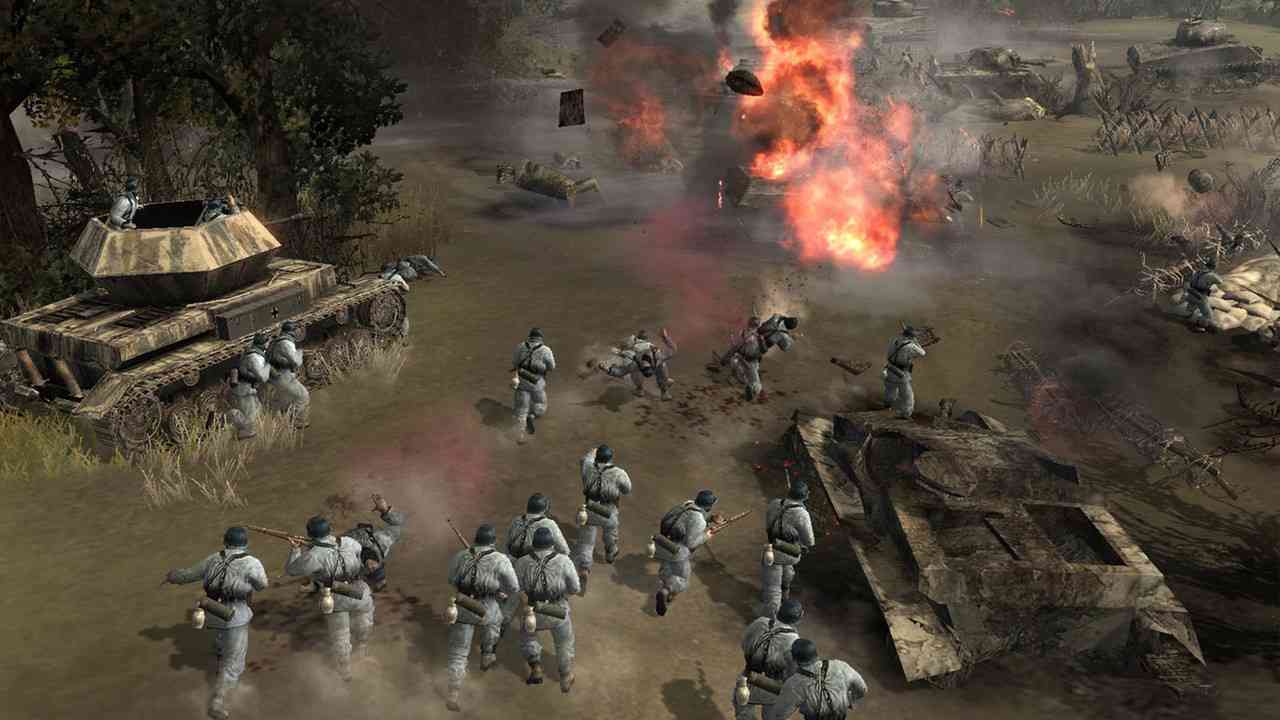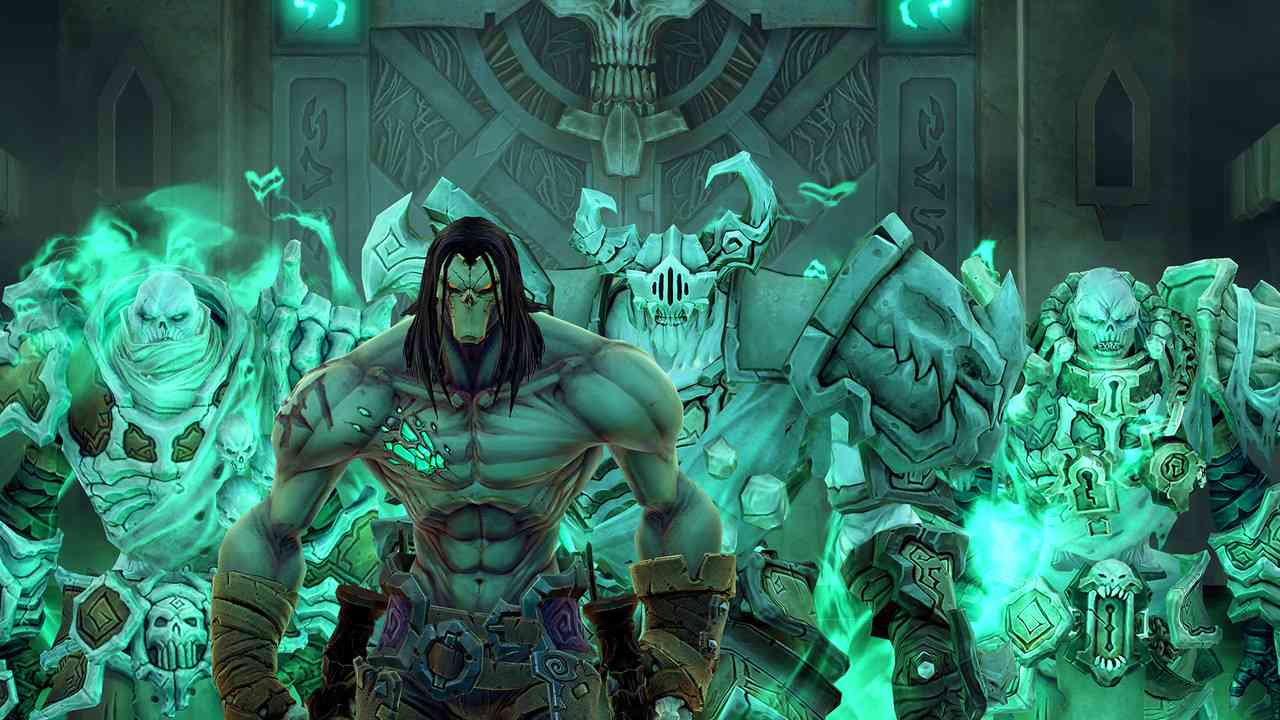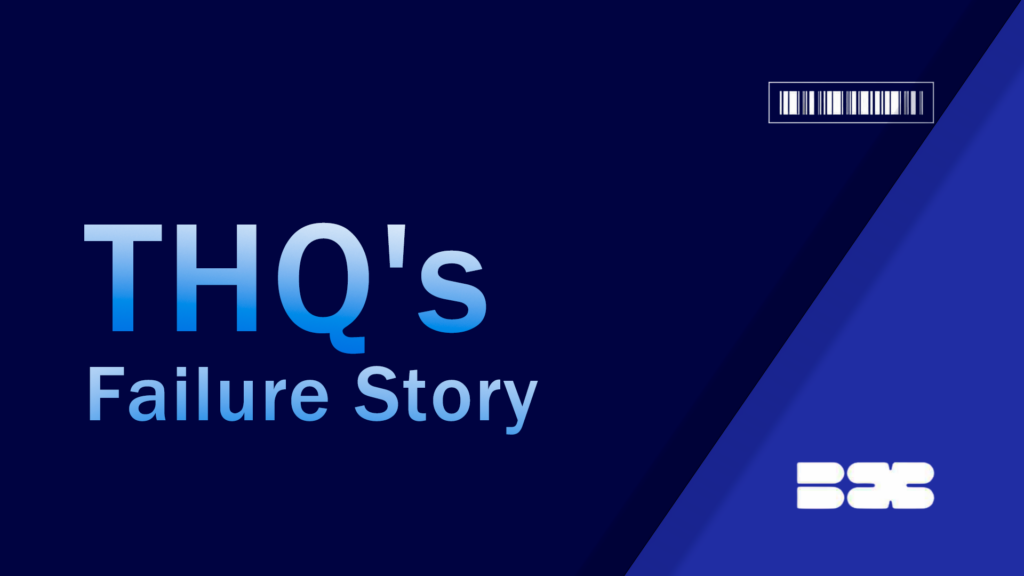This article explores the instructive story of how a series of wrong decisions and cumbersome management led to the downfall of a large corporation.
Highlights
- The whole story of the rise and fall of THQ
- Recap of its most known achievements
The gaming industry is harsh: make a few mistakes, and a studio can quickly be forgotten. There are numerous instances where seemingly successful companies suddenly sank, shocking many. A textbook example of such a failure is THQ. Once valued at over a billion dollars, this major publisher managed to go bankrupt and lose everything.
The Road to the Top

Brian Farrell
At the beginning of its journey, the company created everything related to children’s entertainment: toys, board games, and video games. The name THQ itself came from the abbreviation for Toy Head-Quarters. A shift towards interactive entertainment occurred in 1994, and by 2000, the familiar logo appeared.
The company was led by Brian Farrell, who built a highly efficient working system, transforming today’s hero from an obscure organization into one of the industry’s leaders. Farrell and his department had a good grasp of the children’s game market based on licenses. Unsurprisingly, they only invented something new but focused on this niche.
This approach was prevalent in the 90s and early 2000s. The formula was considered relatively safe, as the license cost quickly paid off due to the famous name, low cost, and short development time. Consumers bought these creations in huge numbers, as many children wanted to play as their favorite cartoon or movie character.
Even Disney willingly sold the rights to its iconic heroes to third-party studios. Thus, THQ eagerly signed numerous licensing deals, understanding they would bring massive profits.
Moreover, at that time, there was no shortage of licenses. New movies, cartoons, and series were constantly being released, for which creations based on them were needed. If a studio announced several works for the year ahead, THQ would already create a title based on them.

Cars – Disney & PIXAR
The company had long-term contracts with Disney, Pixar, Nickelodeon, DreamWorks, Mattel (Barbie doll), and Hot Wheels (toy cars). Many controversial licenses went unnoticed because the profits flowed like a river, and the business thrived.
Projects that began with Peter Pan, Home Alone, and wrestling simulators were going so well that in 2007, they reported an income of 1 billion dollars. Farrell believed the THQ business model would always thrive. How wrong he was’¦
The Beginning of Problems

Company of Heroes
Amid all the financial successes, the management missed the moment when the market began to change. Children’s games brought in less and less profit, and THQ was entirely dependent on this single source of income. At the same time, the mobile market was gaining popularity.
Right after the iPhone launched, it became a home for licensed games because it was incredibly profitable. Unlike the console version, a cheap title based on a theme could be produced for a much smaller budget and in a shorter time frame. The company feared its inexperience and missed the chance to become a pioneer in this segment.
Moreover, the management made a significant miscalculation with releasing the Xbox 360 and PlayStation 3. They believed their audience would fully transition to the new consoles, so they launched many new projects and spent considerable money on their promotion. However, to their surprise, gamers quickly upgraded, leading to the first budget leak.
At the same time, numerous contracts, signed many years in advance, continued to operate. The publisher was forced to continue releasing games based on licenses and paying substantial licensing fees and royalties. Everyone understood these projects would not pay off due to the rapidly shrinking audience.
By 2008, it became clear that THQ had held onto its formula for too long without developing a backup plan. The global financial crisis, which swept the planet, especially highlighted all the shortcomings. Part of the management believed that changes were vitally necessary.
Others wanted to stay where they had worked for many years, considering the situation would soon improve. After heated discussions, two options remained: delve into mobile games, move into the AAA segment, and release expensive projects.
They chose the latter, as there was enough capital, and many were concerned about the instability of the still-young segment. Moreover, changing platforms could lead to mass layoffs, which they wanted to avoid.
Crisis

Saints Row 2
In 2008, a department was created that would deal with significant titles, and many experienced developers and managers joined THQ. Everyone hoped that they would help THQ reach leading positions. However, the transition to a new system could have worked out better, as the company needed help to shake off its old habits.
Newcomers faced hostility from the old guard, who couldn’t let go of children’s games based on licenses. People who had recently worked on SpongeBob SquarePants needed help to adapt to new standards. The algorithm of working with small projects, built over the years, fell apart, and a new one needed to be established.
Moreover, the publisher should have allocated additional funds to develop significant titles. They believed it could be done now if it was possible to manage with small resources. By 2008, 5 out of 15 studios were closed, and the budget for the remaining ones was cut almost in half. A separate problem became the “habit” of announcing the exact release date well in advance.
This worked well with licensed creations tied to the release of a movie or cartoon. However, with standalone projects, it led to constant conflicts with management. Due to continuous pressure from above, titles ended up raw and unpolished, with poor optimization, resulting in lower profits than expected. The most notable example was Homefront, which was released unfinished and was thoroughly beaten by competitors.

Juiced
Accustomed to thinking on a smaller scale, management needed to understand that large IPs required more time, money, and flexibility than they were willing to give. Moreover, contradictions were exacerbated due to the management’s half-hearted actions. They constantly asserted that the company’s future lay in AAA projects, yet they continued to launch children’s games based on licenses.
Many funds went into the new direction, although the family projects department released significantly more work. Moreover, a significant part of what was released was a copy of more successful projects, as with Juiced and NFS or Saint Row and GTA.
Gradually, revenue turned into a small trickle. Hoping to make a breakthrough, Farrell approved the MMO Warhammer 40000: Dark Millennium. However, after several years of development, the project was closed due to high expenses. By 2011, THQ was in a deep financial crisis when the tablet happened.
Tablet

uDraw Tablet
In 2010, for the Nintendo Wii, THQ released the first generation of the uDraw tablet. The second generation of the peripheral gaming tablet released a little later, was intended for PlayStation 3 and Xbox 360 consoles. But while the first iteration had good sales, the second iteration performed terribly. The numbers were so low that there is a legend that during the discussion of the first sales results, one of the attendees thought the decimal point in the report was misplaced.
The great success of the tablets for Wii was a complete surprise for THQ. Due to improper planning, products could not be produced in the required volume. Incredibly, the warehouses in Europe and Australia were mainly empty, and the goods arrived after the Christmas holidays.
The failure of the second part turned out to be extremely painful.
Some blamed the absence of cool exclusives that would promote the peripheral. Others explained the fiasco as the company needed to understand what this device was made of. Meanwhile, the departments repeatedly expressed dissatisfaction with working on an unnecessary device.
They believed the development would better suit the family games audience, not PS3 and Xbox 360. Additionally, the tablet was crushed under the marketing juggernaut of Kinect, which Microsoft and PlayStation Move actively promoted.

Darksiders 2
Realizing the colossal losses, the management stopped supporting their project. The publisher should have tried to release programs that could utilize the capabilities of uDraw. As it turned out later, they were counting on a title from Marvel that promised a drawing mechanic. Since the idea originated from the children’s and family games department, the responsibility fell on its head, Martin Good, and THQ’s CEO, Brian Farrell.
The development of the peripheral tablet was costly, which, together with its financial failure and the overall poor state of the corporation, inflicted irreparable damage. The shortcomings of Red Faction: Guerrilla and two parts of Darksiders exacerbated the situation. Losses from 2012 to 2013 amounted to $55 million. It became impossible to find investors, available capital was running out, and debts were accumulating.
End

Homefront: The Revolution
By 2012, only five studios remained under THQ’s management. The children’s and family games division was closed a little earlier, and all employees, including managers and leaders, were disbanded. The only chance for salvation the team members saw was in the launch of next-generation consoles, as many projects were in development.
Firm hopes were pinned on Evolve, Homefront 2, and 1666 ‘ a historical adventure in an open world. It was believed that the probability of a title’s success at the beginning of the life cycle of a PS or Xbox was much higher than at the end.
In 2012, Jason Rubin, one of the founders of Naughty Dog Studio, came on board as president. His main task was to restructure the company to prepare THQ for acquisition by another corporation. Clearlake Capital Group, based in Los Angeles, was the leading candidate for this.
Although the overall value of the publisher was estimated at a meager $12 million, Clearlake offered 60 to test the market’s interest in the sale.
Everything was ready for the deal. Employees were even sent notifications stating the contract for the acquisition of CCG’s assets had been signed and that the best way to expedite the process lay in bankruptcy, which was recognized in 2013. However, most of THQ’s creditors, who considered the offer too small and insufficient to cover all accumulated debts, opposed this. Moreover, many were dissatisfied that they were not given time to participate in the auction.

THQ Nordic
The final nail in the coffin was the court’s decision, which considered the company’s bankruptcy procedure in the USA. It prohibited the sale, arguing that a non-disclosure agreement had already been signed with a potential buyer before publicly announcing it. After that, the judge ordered the assets to be sold separately.
While employees still harbored hopes for the launch of new consoles, many clients, organizations, and companies filed lawsuits against THQ. Some were related to licensing agreements, others to unpaid income for pre-ordered games, and others to unfulfilled obligations.
In the end, some studios that did not attract any interest, such as Vigil Games (Darksiders series), were closed. A significant portion of the publisher’s intellectual property was auctioned off to external teams for a mere $5 million. The auction, which attracted many eager to profit, lasted two days.
Eventually, Sega acquired Relic studio, Ubisoft obtained rights to South Park: The Stick of Truth, 2K acquired the WWE wrestling series, and Evolve, Deep Silver received the Volition team and rights to the Metro franchise. Primarily, studios whose projects were more than halfway completed were of interest, as in this case, they received all the profit for pennies.
The main prize went to Nordic Games, which purchased the THQ trademark and many other projects, such as Titan Quest, Darksiders, and Destroy All Humans! Thus, the new owners gained the opportunity to release games under the name THQ Nordic.
Summary
The gaming industry is replete with stories of meteoric rises and sudden falls, mirroring the tale of THQ. One notable example is Atari, the pioneer in arcade games and home video game consoles in the 1970s and early 1980s. Atari’s success with games like “Pong” and the Atari 2600 console marked the beginning of home gaming.
However, poor business decisions, over-saturation of the market, and the infamous release of the “E.T. the Extra-Terrestrial” game, which led to the video game crash in 1983, resulted in Atari’s significant decline. Another example is
Sega was once a formidable competitor to Nintendo in the console market. Sega’s Genesis console was highly successful in the early 1990s, but the company needed help to maintain its momentum with subsequent consoles like the Saturn and the Dreamcast.
Despite having a loyal fan base and pioneering online gaming with the Dreamcast, Sega eventually exited the console market in 2001 to focus on software development. These stories serve as cautionary tales of how rapid innovation, market dynamics, and strategic decisions can dramatically affect companies in the gaming industry.


